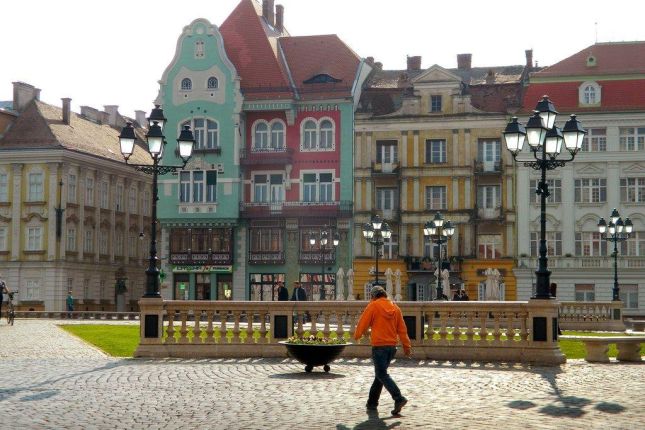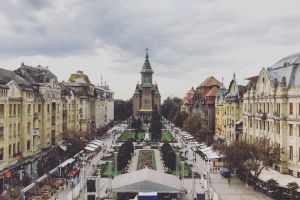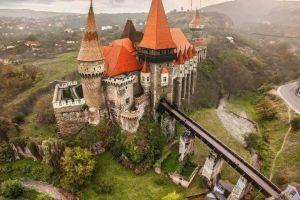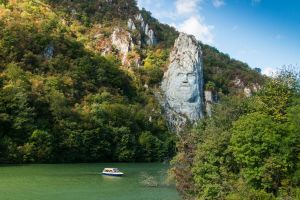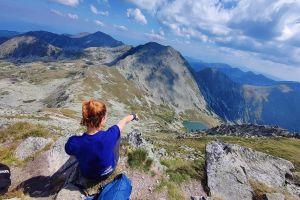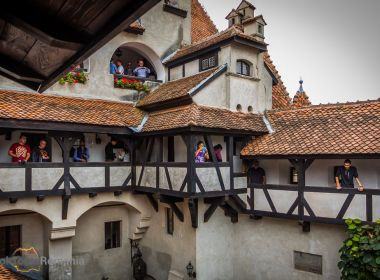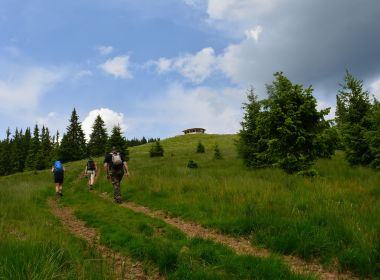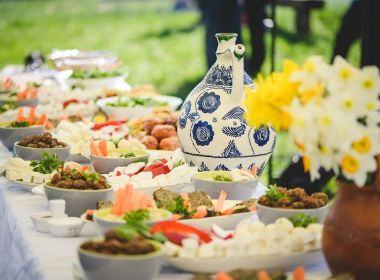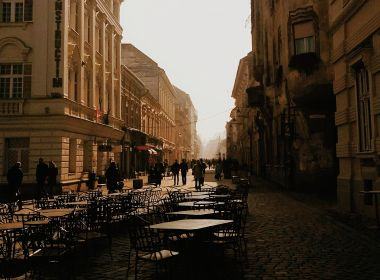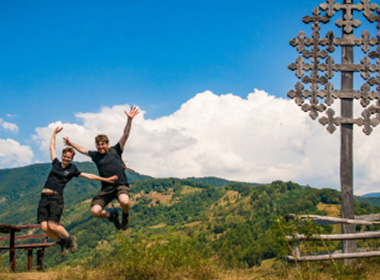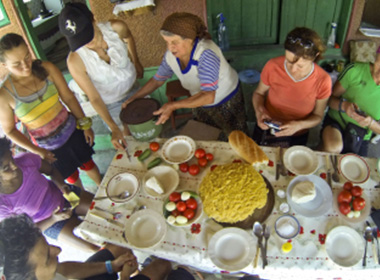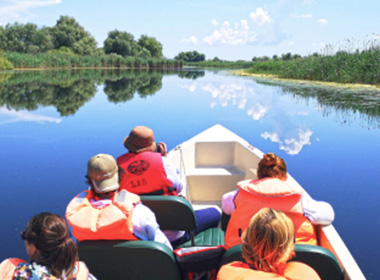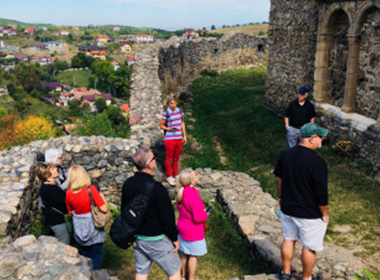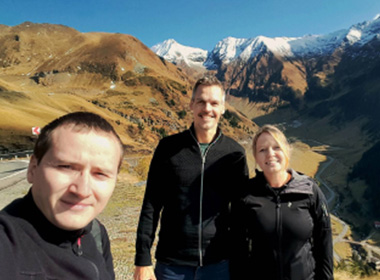25+ Best Things to Do in Timisoara: Places to Visit in 2025
Timisoara is a major Romanian city known as the rebel child thanks to its proximity to the Western part of the country. Because of this, and unlike other cities in Romania, the Romanian revolution of 1989 that overthrew the communist regime started here on 16 Dec and by the following weekend, Ceausescu was dead.
Besides its important role in modern Romanian history, in recent years the city of Timisoara has become a top IT, student, and commercial hub. Timisoara was the 2023 European Capital of Culture and the city still lives in this afterglow of this event.
With shiny Art Nouveau buildings, street art, art galleries, lots of green spaces, and friendly, laid-back locals, there are plenty of things to do in Timișoara, Romania. Trust me, this city offers everything from tourist attractions to a fantastic general atmosphere.
Be sure to check our travel guide for visiting Romania to make your planning easier.
In this Timisoara travel guide, you'll find over 25 of the best things to do in the city.
Table of contents
- What makes Timisoara special
- Short history of Timisoara
- Timisoara and the 1989 communist revolution
- Timisoara today
- Top attractions and best places to visit in Timisoara
- 1. Go for a walk in the Old Town area
- 2. Admire Union Square aka Unirii Square
- 3. Admire Bruck House inside and out
- 4. Hop on the tram in Liberty Square
- 5. Victory Square, where the communist revolution started
- 6. Attend a concert at the Romanian Opera House
- 7. Visit Hunyadi Castle Museum
- 8. Visit the imposing Orthodox Metropolitan Cathedral
- 9. Take the kids to the Ion Creanga Children’s Park
- 10. Go for a walk in Roses Park
- 11. See Central Park
- 12. Admire flora at the Botanical Park
- 13. Take a walk on the Bega River promenade
- 14. Discover the history of Maria Theresia Bastion
- 15. Visit the historic neighborhoods of Timisoara
- 16. Travel back in time at the Communist Consumer Museum
- 17. The Village Museum of Banat
- 18. The best castle in Romania? Corvin Castle
- 19. The Dacian ruins at Sarmisegetusza
- 20. Be amazed by the King Decebal Statue
- 21. Go on a boat ride at the Danube Gorges
- 22. The lost beauty of Bigar Waterfall
- 23. A slow and scenic train ride
- 24. Hike to Ochiul Beiului Lake
- 25. Hike to remote villages
- 26. Hike in Retezat National Park
- 27. Try different restaurants with great food
- 28. Have a drink with a view
- Timisoara travel guide final tips
What makes Timisoara special
With a population of around 350.000, Timisoara is the third largest Romanian city thanks to its importance as an economic, cultural, and regional hub in Western Romania known as the Banat region.
Pro tip:Timisoara Airport is well serviced by flights from Europe so flying in is a good option to get here!
Ethnic Hungarians, Serbs, Germans, Croats, Jews, and Turks lived here for a long time, and Romanians were not always the majority population like today.
Even now if you go for a walk in Union Square (city center) or in the nice places of the Old Town area you'll hear different languages spoken - and not by tourists!
Locals always had an interest in culture, arts, and its many expressions: literature, plastic arts, music, theatre, and many others. Even during the Romanian communist regime years the cultural life in Timisoara was very active, almost rebellious.
Local tip:Many contraband items circulated then: Kent cigarettes, Levi's jeans, Western magazines, books, vinyl records, and much more; so if you're passionate about vintage objects - visiting antiquarians is one of the best things to do in Timisoara!
The city's cultural heritage was rich not just from a historical 'official' perspective like what you'll see if you visit Sibiu - but was deeply ingrained in local life and people's hearts even when it went underground due to political restrictions and ideology.
That's why a guided tour with a native of Timisoara is the best way to understand this. Because it's not about the city's main sights or a walking tour in the main public squares - it's about the people that live here and their mindset.
All this helped the city secure its place as the European Capital of Culture initially in 2021 - but due to obvious Covid reasons, was moved to 2023. Lots of events, exhibitions, and concerts (kid-friendly too!) took place that year in Timisoara.
Timisoara is a city of particular importance, being the first city in Europe with street lighting. On November 12th, 1884, the very first electrical lamps in Europe were turned on here. Timisoara was also the first European city that used horse-drawn trams.
The best time to visit is during Summer time, maybe at the end of the weekend on a city break.
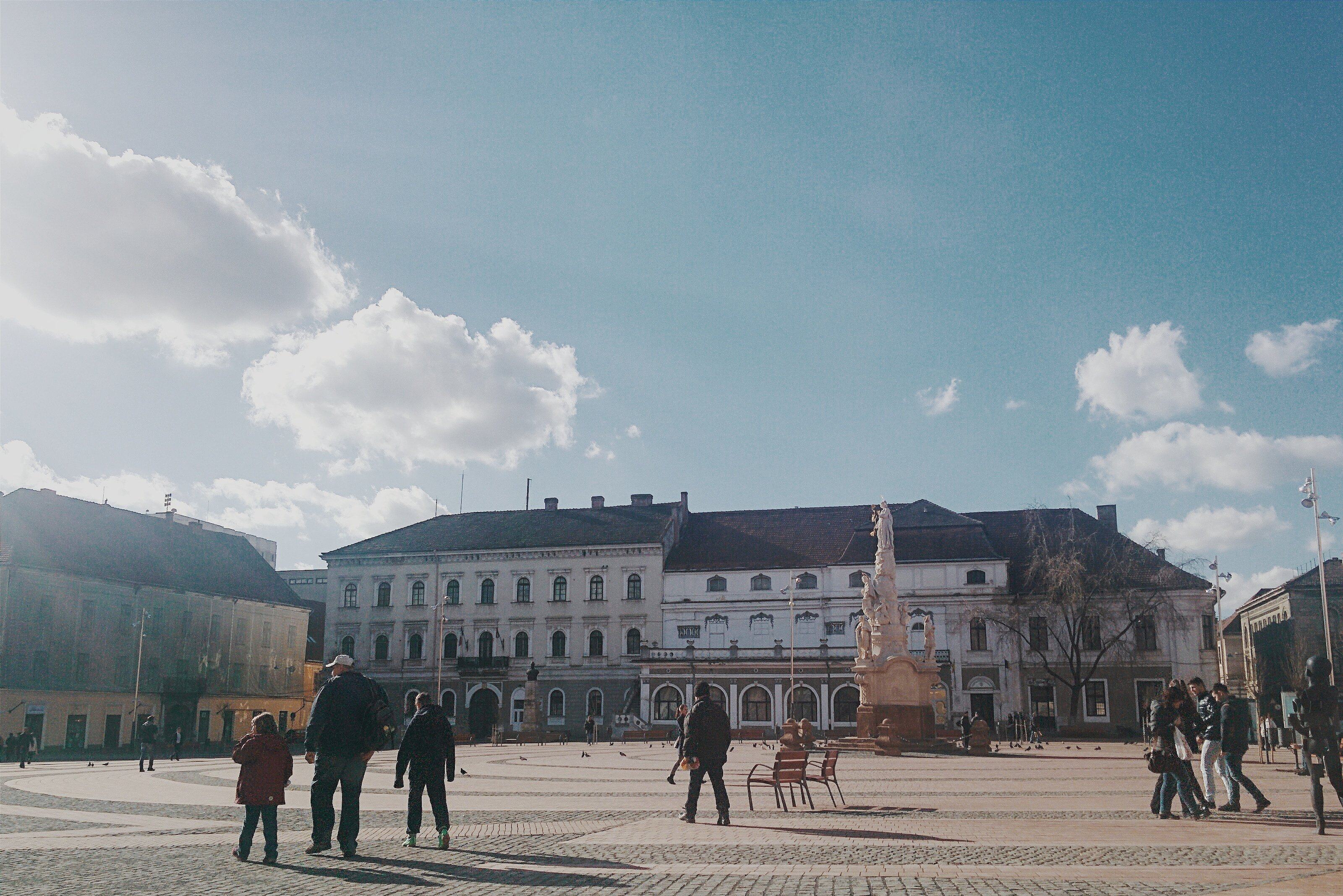
Union Square is one of the best places locals like to hang out
Short history of Timisoara
The earliest traces of people living here date back to 4,000 BC (still, the city was first mentioned in the Middle Ages). But it's undeniable that our ancestors, the Dacians, lived here: the ruins of the Dacian fortresses are nearby in the Carpathian Mountains.
Thanks to its strategic location on the Bega River, linked to the Danube, Timișoara became a key trading crossroads between East and West. Its economic importance made it a desirable prize for Central European powers and the Ottoman Empire, leading to numerous wars and takeovers by six ethnic groups.
The city was under Austrian rule for much of its history, and the Habsburg legacy is evident in its stunning architecture and main squares, Piata Unirii and Piata Victoriei. It was also the first European city to have street lighting!
Timișoara's rich history and vibrant culture are best explored with a local guide on a walking tour, where you can uncover the fabulous Austro-Hungarian heritage that still defines its charm today.
But Timisoara was always known as the Little Vienna and maybe that's why Johann Strauss performed his first-ever concert outside of Vienna at the Timisoara Beer Factory - which is a great place to visit!
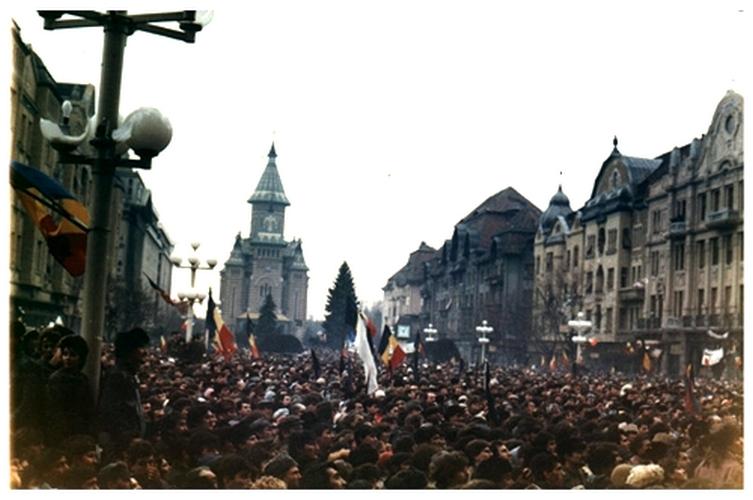
The Romanian communist revolution started in Union Square in Timisoara
Timisoara and the 1989 communist revolution
The communist revolution started on 16 Dec 1989 when the supporters of a Hungarian pastor peacefully protested against his removal by the local authorities. Police intervened using force and opened fire - which only angered protesters further.
As news of these events spread to families and friends, in the following days protests quickly erupted in other cities and factories in Western Romania. Eventually, the events reached their climax on 23 December in Bucharest when dictator Nicolae Ceausescu fled and was later executed.
Timisoara today
Despite its turbulent, rebellious past, today Timisoara is a beautiful city and a peaceful place - except for the occasional military parade on December 1 which is Romania's National Day.
The city breathes diversity and acceptance of its multi-ethnic community. Besides the city’s Romanian population, you will notice a lot of Serbians, Hungarians, Jews, Arabs, Germans and Italians.
When you're in the city center take a look at these religious places of worship:
- the impressive Orthodox Metropolitan Cathedral just opposite of Victory Square and the Romanian Opera House
- the Serbian Orthodox Cathedral in Piata Unirii
- the Roman Catholic Cathedral (known as St George's Church or St George's Cathedral) also in Piata Unirii
- the Stronghold Synagogue close to Liberty Square
- the Misericordia Church of Greek-Catholics also close to Liberty Square
Top attractions and best places to visit in Timisoara
With such a diverse cultural background and complex history you can expect an equally rich architectural mix of Baroque, Art-Nouveau, Neoclassical, and, of course, communist-inspired buildings in the main squares of Timisoara. The city is not called Little Vienna for nothing!
1. Go for a walk in the Old Town area
The central area in Romania's third-largest city is called Old Town. It's circle shaped on the map surrounded by many parks (Roses Park and Central Park being the most popular places) and the Maria Theresia Bastion
The best way to explore all the nice places and see the beautiful historical buildings in the city center is on a walking tour. But you can also choose a bike tour if you want to go beyond the central area and see more sights.
In the Old Town, there are several main squares with the best places to visit and main sights for tourists.
2. Admire Union Square aka Unirii Square
This square goes by many names but in Romanian it's called simply Piaţa Unirii and is arguably the most beautiful place in the central area of the city.
You'll find here the Art Museum in the superb Baroque Palace dating back to the late 18th century and a symbol of Habsburg Empire domination.
Fun fact:The Art Museum is the first Romanian art museum finalist at the 'Art Museum Awards 2024' Gala.
The Catholic-Orthodox Cathedral is also here (sometimes called the Dome - hence the name Dome Square for this landmark), and many other beautiful buildings.
Timisoara also boasts the largest pedestrian area in Romania, which starts in Unirii Square, making it an excellent starting point to explore the city on a walking tour. You can also enjoy great food here, as you'll find a lot of restaurants with outdoor seating, so you can take in the city vibe.
3. Admire Bruck House inside and out
Nearby is Bruck House which is a four-level impressive and colorful Art Nouveau building built in 1910. The original owner opened a pharmacy on the first floor and it’s still there along with the original furniture and equipment - so this is one of the best places to visit while in Union Square.
In the centre of Union Square, there's a small park where you can sit and enjoy this peaceful place where locals like to hang out. Or take a seat at the many cafes and restaurants you'll find here.
4. Hop on the tram in Liberty Square
In Romanian called Piata Libertăţii here you'll find the Old City Hall building of Timisoara. The Museum of the Revolution is also here and serves as a solemn memorial, preserving the memory of the events in December 1989 when peaceful demonstrators confronted the repressive forces of the Romanian communist regime.
From here you can take a tourist tram for a guided tour of the Old Town area. Tram tours are organised only on Sundays between 10:00 and 19:00 and tickets can be bought from the conductor.
If you continue on Alba Iulia Street you will end up in the last of the main squares of Timisoara.
5. Victory Square, where the communist revolution started
Piaţa Victoriei is the most important place in the city center and it’s where the communist revolution started in the city - which later spread to the rest of the country.
What started as a gathering of angry citizens quickly turned for the worst. Local authorities trying to stop the protest from spreading called in the army who eventually opened fire on the unarmed civilians.
If you look closely at the walls of some buildings here you can still see bullet holes left there on purpose to remind people of what happened here…
Today, this is a popular spot for locals to take a walk and enjoy themselves. You'll find many buildings with beautiful architecture lining both sides of the central alley, which transforms into a small rose park during the warm season. Here, you can also see the National Theater and Opera, as well as the Metropolitan Cathedral.
6. Attend a concert at the Romanian Opera House
The Romanian Opera House in Victory Square is the main concert building and cultural hotspot in the city. It is a beautiful building where you can enjoy various plays and events with excellent acoustics.
The Opera House also holds historical significance. From its balcony, Timisoara was proclaimed the first free city in Romania on December 20, 1989.
The same building also houses the National Theatre (Teatrul Național „Mihai Eminescu”) and the German State Theater.
7. Visit Hunyadi Castle Museum
Nearby is the Hunyadi Castle Museum, housed in a construction built between 1307 and 1315 during the reign of King Charles Robert of Anjou.
Sadly, it’s also currently closed for renovations, which means that you can't go inside. But you can still admire its architecture from the outside.
8. Visit the imposing Orthodox Metropolitan Cathedral
Towering in Victory Square is the Romanian Orthodox Cathedral and this is the most famous landmark in Timisoara. It houses notable religious artifacts and historical relics significant for the Orthodox faith in Romania.
Built between 1936 and 1946, it stands out for its distinctive Byzantine style, reminiscent of the style found in the monasteries in the Bucovina region.
Notably, its dome reaching a height of 83 meters, holds the distinction of being the tallest in Romania.
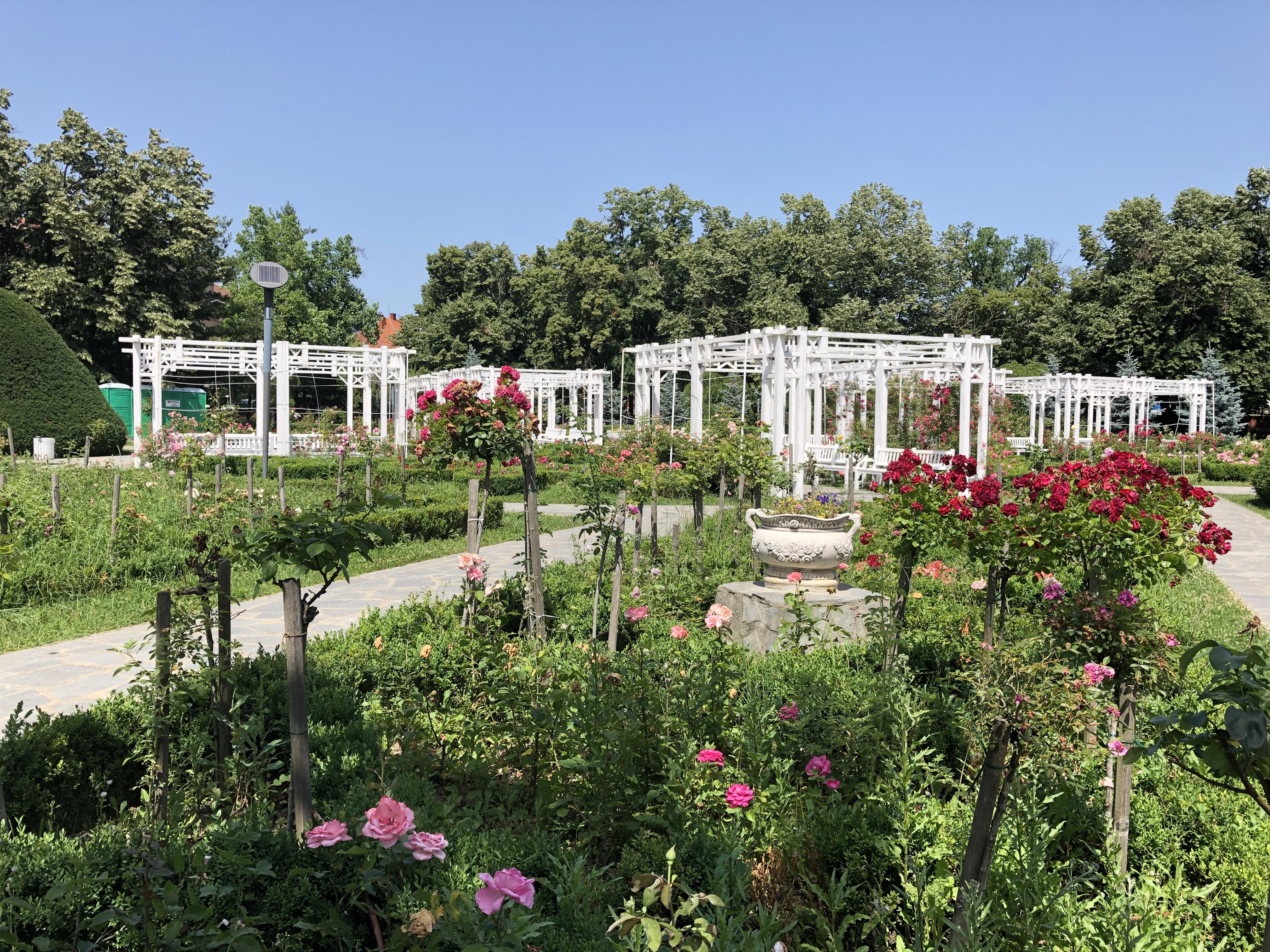
A walk in Roses Park is one of the best things to do in the city
9. Take the kids to the Ion Creanga Children’s Park
If you are in Timisoara with your kids, then the Ion Creanga Children’s Park is the perfect place to visit. It’s on the Bega river bank, in the central area of this vibrant city.
The development of the park began approximately 160 years ago in 1858, and the work was not completed until 33 years later, in 1891. It is a place where you can engage in various recreational activities. The park also has a fairy castle that will surely delight the kids.
10. Go for a walk in Roses Park
Roses Park is famous in the entire country during the warm season for its collection of flowers (not just roses).
Established at the close of the 19th century, this beautiful park boasts more than 9,000 rose bushes and 450 trees. Its lush greenery and vibrant blooms have earned Timisoara the charming nickname 'The City of Flowers.'
11. See Central Park
Central Park, just behind the Romanian Orthodox Church in Victory Square, is considered the most beautiful park in the city and a favorite place for locals. During summer, the park offers a cool and shaded escape from the heat, providing a refreshing retreat for a few moments.
Here, you can also discover the 'Alley of Personalities,' featuring more than a dozen statues of prominent figures from the city's history. So, it's not just a great spot to unwind but also an opportunity to delve into the rich history of the city.
12. Admire flora at the Botanical Park
If you have a passion for flora, the Botanic Park (Parcul Botanic) is an exquisite haven for you. Explore distinct botanical gardens featuring over 200 plant species meticulously arranged into thematic sectors.
Here, you can immerse yourself in the beauty of ornamental, Romanian, Mediterranean, and Asian flora, while also exploring the fascinating world of medicinal plants. There are plenty of walking paths that bring you close to the beautiful flowers.
13. Take a walk on the Bega River promenade
The best way to get a taste of the laid-back atmosphere in the city is to go for a walk along the Bega River promenade, as many locals do.
Behind the Orthodox Metropolitan Cathedral, there is a docking station from where you can go on a 2h boat ride on the Bega River but only during weekends starting at 12:00 or 17:00. In the cold season, the boat ride isn't available.
14. Discover the history of Maria Theresia Bastion
The Maria Theresia Bastion was one the main gate and defense to the Timisoara fortress which no longer exists since the city centre was built and expanded over it.
Named after the Habsburg Empire archduchess Maria Theresa, it was built between 1730 and 1735 and covers about 1.7 hectares.
With a rich and varied history, the Bastion has undergone a multitude of transformations. Once the residence of the Roman Catholic Diocese of Timișoara, it evolved to house workshops, warehouses, schools, a printing house, and a state archive.
Now, the Maria Theresia Bastion is home to an exhibition space for the National Museum of Banat, a library, and diverse commercial venues, such as an art gallery, bars, and restaurants.
15. Visit the historic neighborhoods of Timisoara
The neighborhoods of Cetate, Elisabetin, and Fabric stand out in Timisoara for their captivating architecture.
Go for a walk through these areas so you can admire the beauty of many houses built in Art Nouveau, Baroque and Renaissance style.
You’ll also seamlessly blend in with the locals in their residential area. You’ll find lots of chic cafes, restaurants and small artisan shops too.
Local tip:An easier way to see these places is to go for a ride on Tram 6!
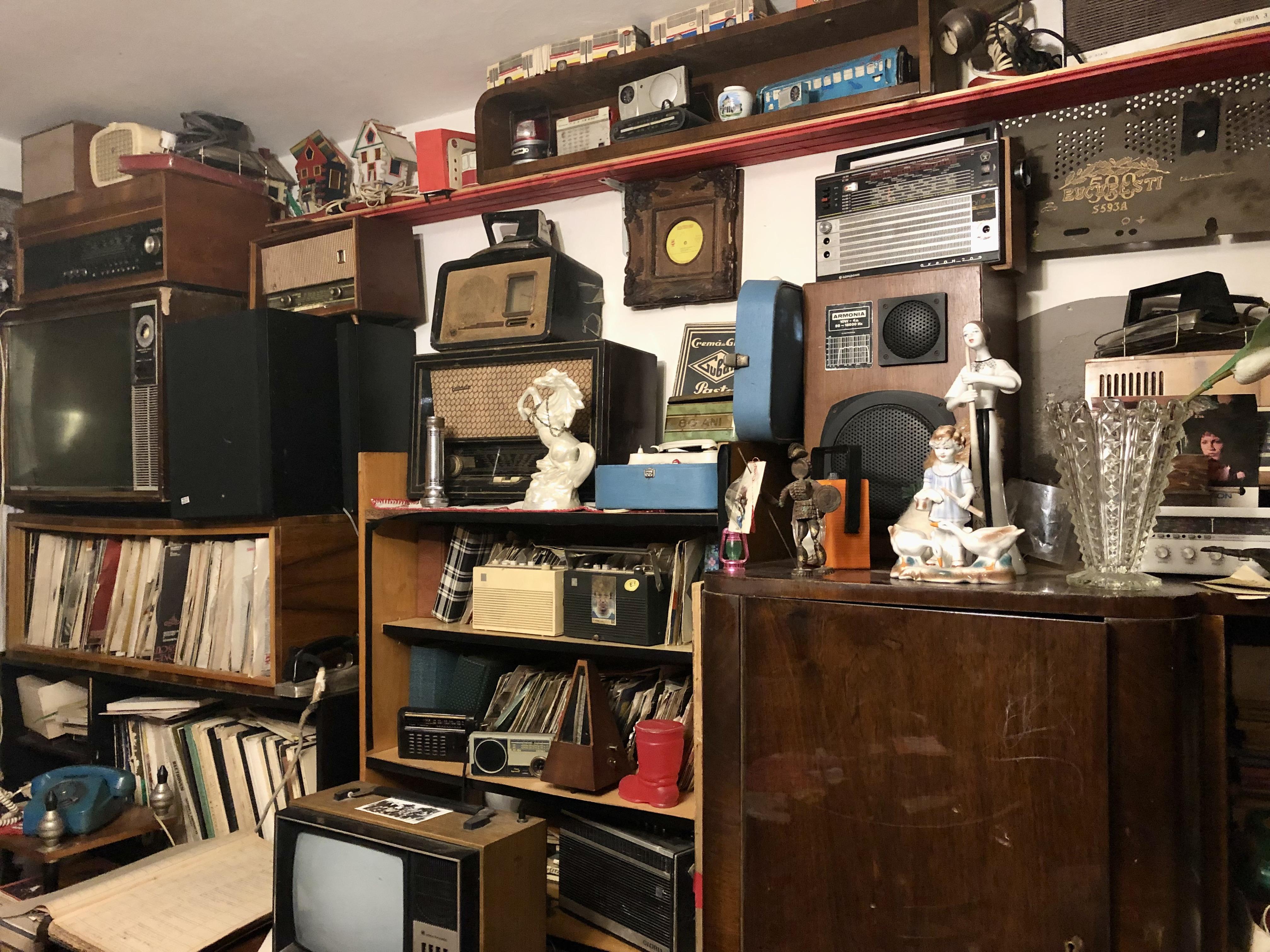
16. Travel back in time at the Communist Consumer Museum
If you’re interested in communist history the first thing to do on your list is visit the Communist Consumer Museum which is basically an old house full of objects and items typical of Romania under the communist regime.
This unique museum will take you back in time and help you understand life under the communist regime in Romania and Eastern Europe. Given its proximity to the border, in Timisoara were a lot of prohibited objects from Bulgaria, former Yugoslavia, and Hungary.
The Communist Consumer Museum is located in an artsy-hippie bar with a yard that looks more like a jungle named Scârţ - don't even bother pronouncing it, ask a local instead!
17. The Village Museum of Banat
This is an open-air museum and a great way to get some fresh air and find out more about rural life in the Banat region.
If this is your first time in Romania, you need to know that every traditional region, for example, if you visit Transylvania, Maramures or Bucovina, have their own folk particularities and traditions, as well as similarities.
The region of Banat has its particularities partly due to its multi-ethnic heritage, and you can learn about these by visiting the Banat Village Museum.
For example, there’s a village called Eibenthal of the Czech minority. Or Charlottenburg, a Saxon village established in 1771 known for its unique round layout.
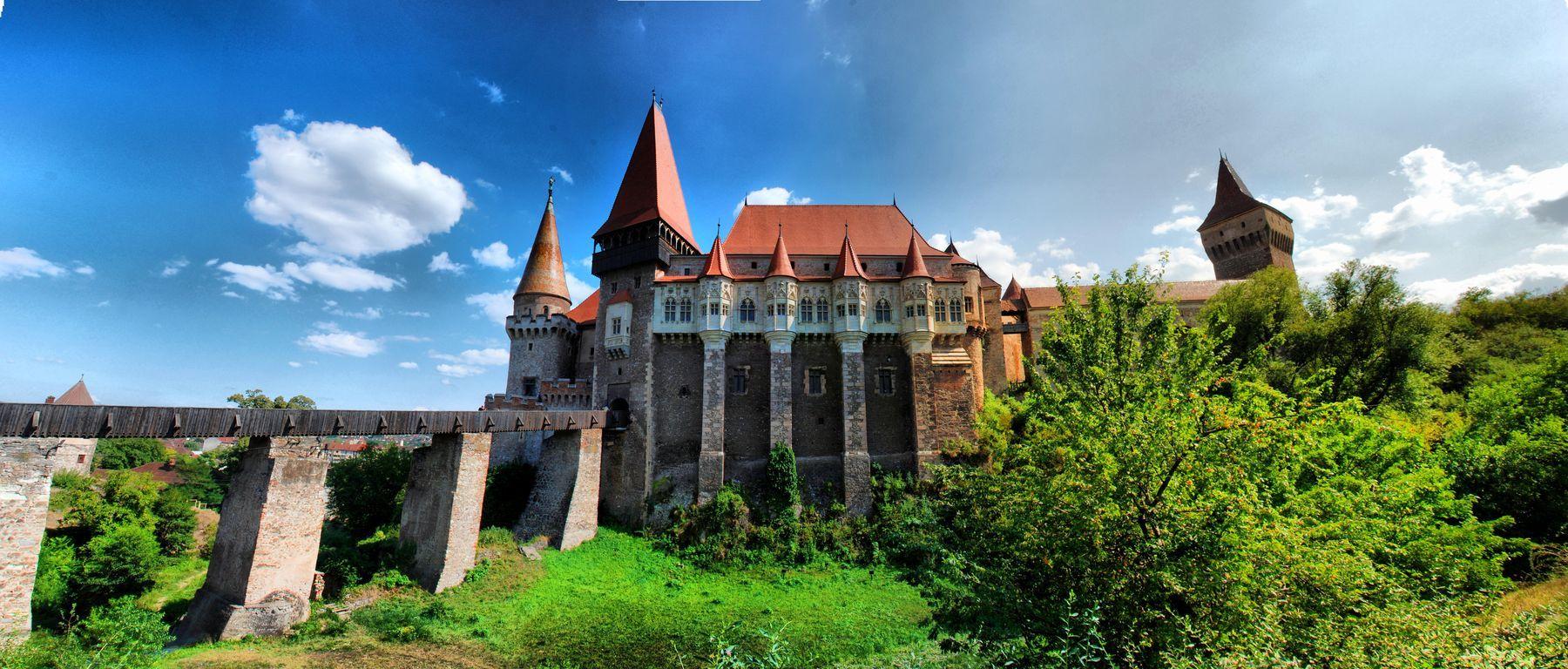
The impressive Corvin Castle is one of the best places you can visit on a day trip
18. The best castle in Romania? Corvin Castle
The best place to visit on a day trip from Timisoara is the famous Corvin Castle which I think is much better than its more popular rival - Bran Castle aka Dracula Castle.
A quick look at this famous Romanian castle
Also known as Hunyadi Castle, this is a well-preserved Gothic-meets-Reinassance masterpiece that served as a citadel and home to Transylvania's rulers. Now it's considered to be one of Europe's best preserved medieval castles.
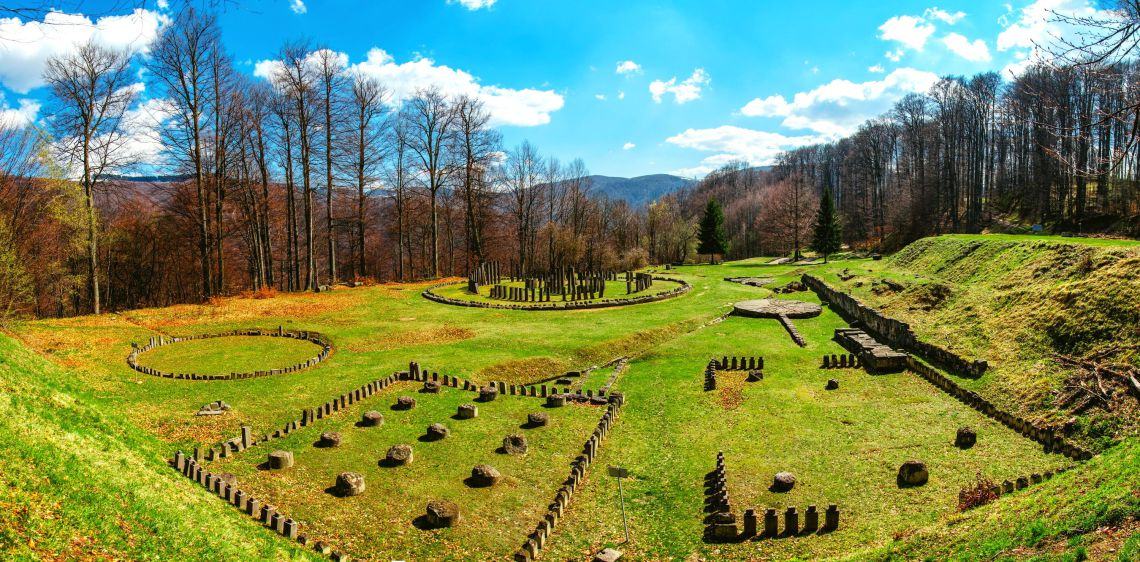
19. The Dacian ruins at Sarmisegetusza
If you’re into history and lost civilisations, then you shouldn’t miss visiting the ruins of Dacian fortresses, the most popular one being at Sarmisegetusza.
Our ancestors, the Dacians, had a distinct culture and settled these lands before being conquered by the Roman Empire in 106 AD. They lived in the mountains where they built several citadels to protect against invaders.
While not much of them have remained today, they give a unique insight into life 2,000 years ago and thanks to their historical heritage and importance were included on the UNESCO list.
20. Be amazed by the King Decebal Statue
Decebal was the last king of the Dacians who fought the Romans in 100 A.D. He was known for his leadership and bravery, so naturally, he became an important figure in our history.
The Danube River is Romania's natural Southern border with Serbia and its winding path created an area of superb beauty: the Danube Gorges. And in the least place you'd expect, on the side of a mountain, you'll discover a massive sculpture of King Decebal.
21. Go on a boat ride at the Danube Gorges
If you decide to go see the King Decebal Statue, you'll be driving along the scenic Danube Gorges.
But in some parts of the river, there are some interesting caves you can explore, only on a boat ride though.
Or you could go on a short hike to get beautiful views of the area. And, obviously, enjoy a delicious meal with fresh fish and views!
22. The lost beauty of Bigar Waterfall
Bigar Waterfall was world-famous for its incredible beauty!
But this massive limestone rock hanging by a thread from the mainland collapsed in 2021 due to natural erosion. And now it seems a new beautiful waterfall is forming here, so it’s still worth visiting.
23. A slow and scenic train ride
Another great idea for a Timisoara day trip is to go for a ride on a slow train called the Semmering (Semeringul Banatean).
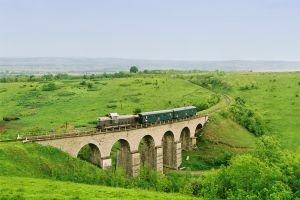
Hotspots around Timisoara: Bigar Waterfall & Oravita-Anina Steam Train
Start from: Timisoara
Traveling at 40-50 km/h between Oravita - Anina through what locals consider the most picturesque valleys and villages in the Banat region, this is a great chance to disconnect from busy life and admire beautiful views.
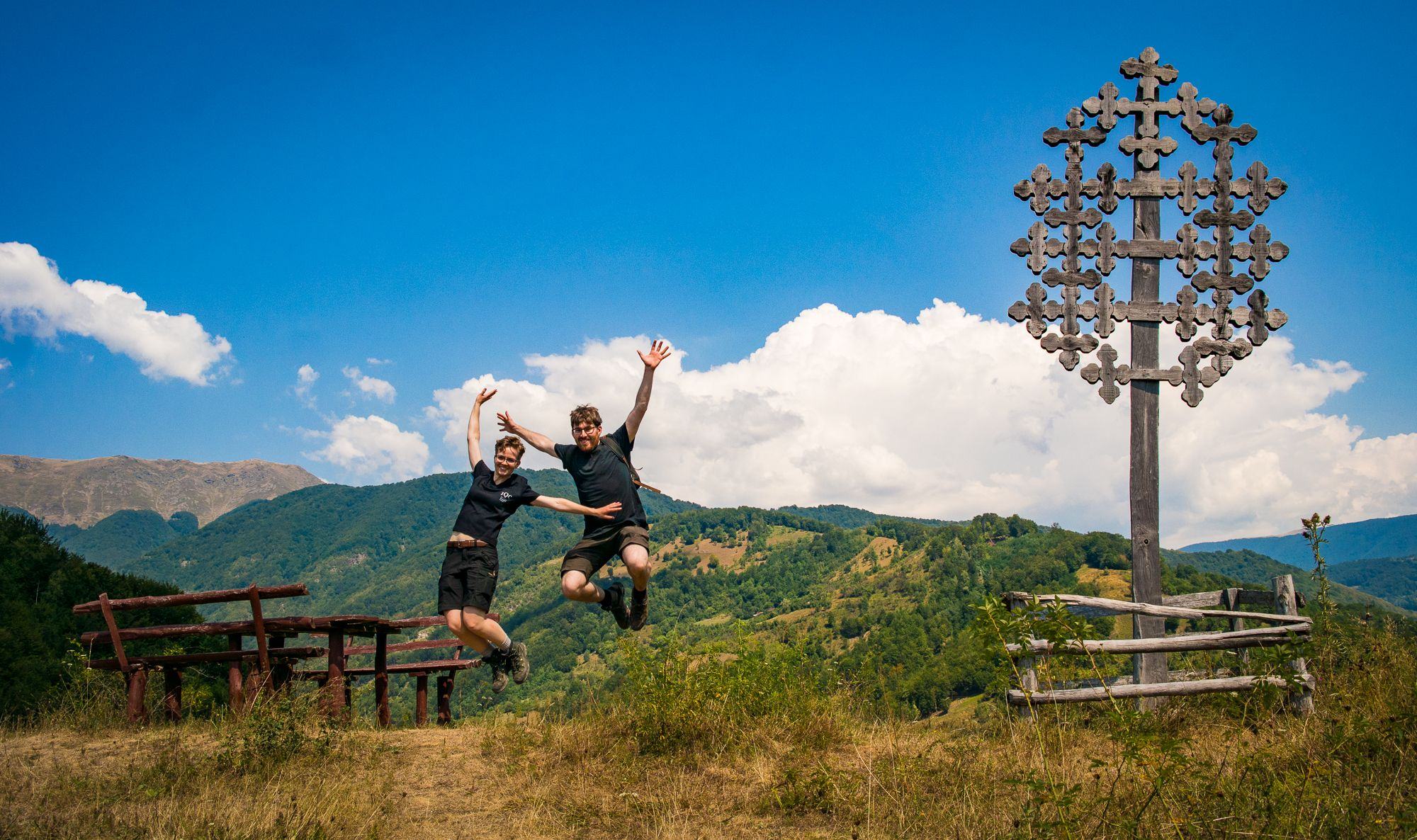
Two happy hikers on one of our day trips
24. Hike to Ochiul Beiului Lake
The Carpathian Mountains have lots of natural attractions and trails for all experience levels to choose from - read our guide on hiking in Romania to find out more.
One of the best places to visit on a day trip if you want to spend the day in nature is Ochiul Beiului Lake known for its unique and fascinating blue colour. The best time to visit is anytime except July - August when because of the heat and less rainfall, the lake is dry.
To get there you’ll have to go through the beautiful Cheile Nerei–Beușnița National Park, one of the richest in biodiversity in our country. The hiking trip to the lake is quite easy, but there are several other routes you can take if you want to make it more challenging and our guide will be happy to take you.
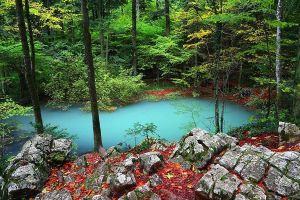
Magical Hike in Nera-Beusnita National Park to Ochiul Beiului Lake
Start from: Timisoara
25. Hike to remote villages
One of the best things to do if you’re in Timisoara and want to discover what traditional rural life looks like is to go on a hiking trip to a couple of remote villages accessible only after climbing ladders on rocks!
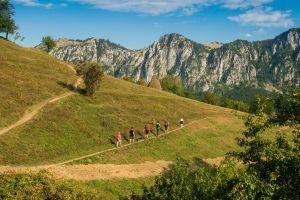
Hiking Tour from Timisoara to Remote Villages & Cernei Valley Natural Park
Start from: Timisoara
There's no electricity, roads, or shops in these villages yet locals live in a tight community and are happy and eager to welcome you in their home for a home-cooked meal.
- BONUS: After a day of hiking, you can relax at one of the best spa resorts in Romania, located in Buziaș, while also admiring elements of Byzantine architecture.
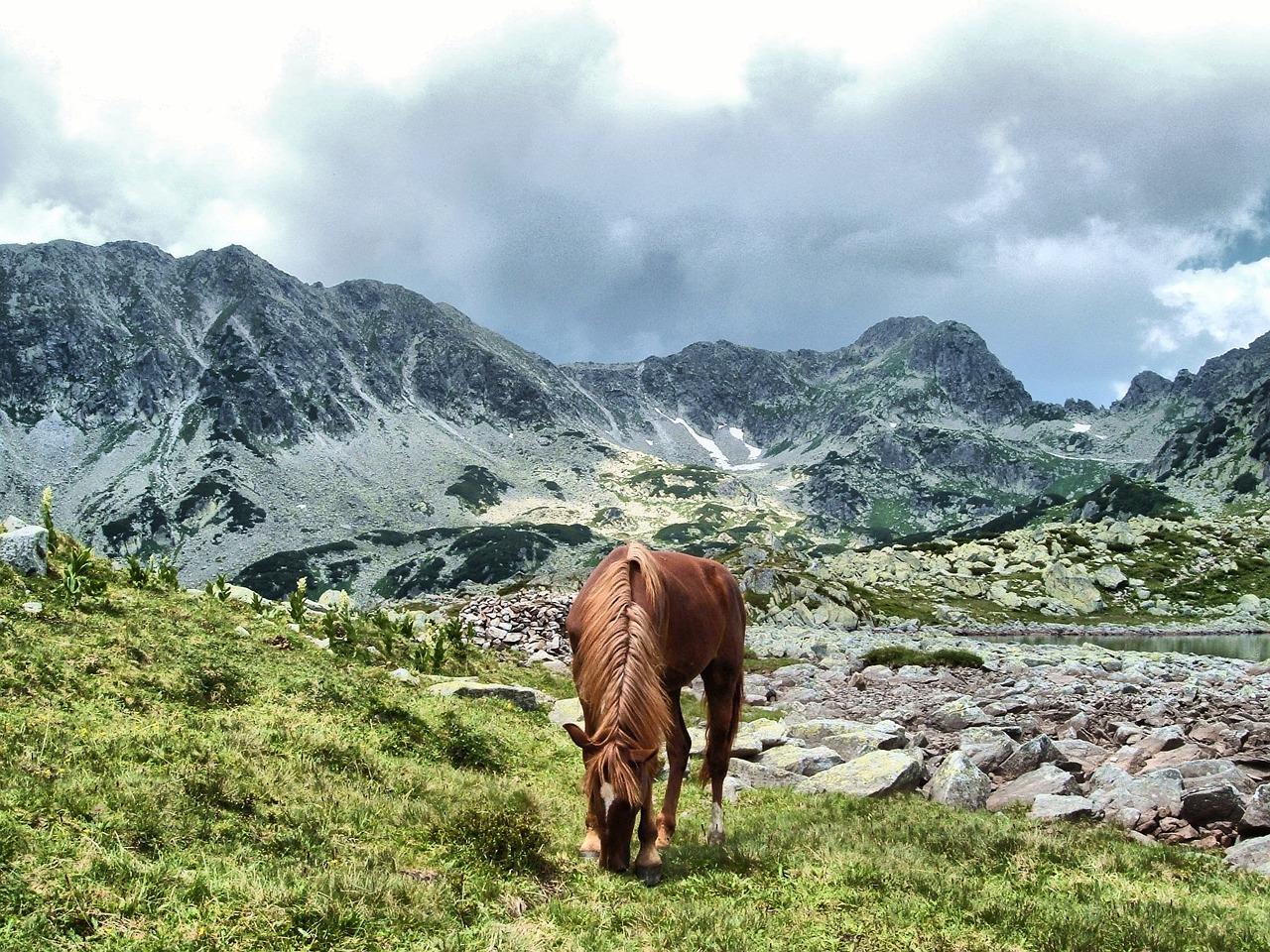
26. Hike in Retezat National Park
Finally, if you’re looking for serious hiking, then Retezat National Park is for you. Reaching altitudes of over 2,000m with Peleaga Peak at 2,509m, this is one of the most beautiful and well-preserved national parks in Romania.
The Retezat Mountains are quite challenging, inaccessible and there are no guesthouses or signs of civilisation in the area. Because of this, few hikers venture into the park so you need to be well prepared and experienced for this trip, and our recommendation is to go with a licensed hiking guide and not underestimate the difficulty and wilderness of the Romanian Carpathians.
In Retezat National Park you’ll find many glacial lakes, the most popular one being Bucura Lake. The best way to experience the beauty of this park is on camping expeditions. Your other alternative is a day trip - but it will be long and hard.
27. Try different restaurants with great food
Being a major student centre in Romania and having such a diverse cultural background, you can expect lots of great places to go out. Here are some of my suggestions:
- for a coffee break, try Mokum Cafe or breakfast at Neaţa Omlette Bistro or Zai Appres Cafe, near Union Square; check our list of the best coffee shops in Timisoara.
- for lunch, you can try Vinto or Dantino Ristorante.
- for delicious homemade desserts and very good coffee, there is only one place to be: Garage Cafe.
If you’re a meat lover and can handle the heavy side of food, I dare you to try our local cuisine at Casa Bunicii 1 (Grandma's House) a lovely place with a charming garden terrace to enjoy in summer.
Here you can eat ciorba de burta (sour beef belly tripe soup), sarmale (meat cabage rolls), mici (Romanian version of grilled meatballs or kebab) and papanaşi (fried dumplings with jam) for dessert. These are some of the best things on the menu for traditional Romanian food you must try!
Gratarul cu Staif is also a good choice if you’re a fan of ribs, burgers, or grilled meat in general. Vegetarians – do not despair: BioFresh offers vegan and raw vegan dishes that will certainly please you.
28. Have a drink with a view
Looking for delicious coffee or drinks with a view? Try any venue on the shores of Bega River - you won’t be disappointed! Some of them turn into mini-clubs in the evening so they're a great way to blend in with locals and have some fun!
If you’re into dance music you can party at Scottish Pub, if you’re into techno and DnB you should try Escape Venue or Database. For the fancy (and more expensive) night out I warmly recommend Epic Society Club.
Timisoara travel guide final tips
If you’re looking for a shopping session, I’ve got a good idea for you: Iulius Town is a huge shopping mall with shops, restaurants, lounge areas, and lots of entertainment venues.
This is a relatively new place in the city but a little further away from the city center and worth the extra cost of going there if shopping is on your mind. The Old Town area is not a great option for that!
Traveling to Timisoara is easy. You can find a direct flight from WizzAir, HiSky, Lufthansa from various European cities. Tarom, the local airline flies from Bucharest. Timisoara Airport is located in the North and getting to the city center is easy by taxi (approx. 10 Euro cost).
Due to its proximity to Central Europe, it’s also easy to get here by train from Budapest, or Vienna. This is actually a really good option as the train station is conveniently located in the central area of Timisoara.
You can also get to Timisoara from Budapest using FlixBus or private shuttles. Check our guide on getting to Romania.
But due to its location and underdeveloped Romanian public transport infrastructure, traveling from Timisoara to other parts of Romania or cities such as Cluj-Napoca or Sibiu is possible only by car or bus and will take about 4h.
In the city, you can use Uber or install the Tudo Taxi app to order a cab online. A usual ride inside the city is about 4-7 Euro and around 10 Euro to Timisoara Airport.
For places to stay in Timisoara check Booking.com or Airbnb and you'll find plenty of options.
As for a typical tourist budget to visit the city - the city is a little cheaper than the popular tourist cities in the country. So an average of 35-45 Euro per day per person for accommodation and meals, depending on what you choose, will be enough.
That's it! If you have any questions contact us we're happy to help you plan your trip.
So, are you ready to visit Timisoara?
Your Romanian Friend,
Mihai
Places to visit
4 times a year we prepare a newsletter with local stories, places and our special insights about Romanian culture and local life that will inspire you to visit our country and have an authentic local experience. Would you like to get it?
